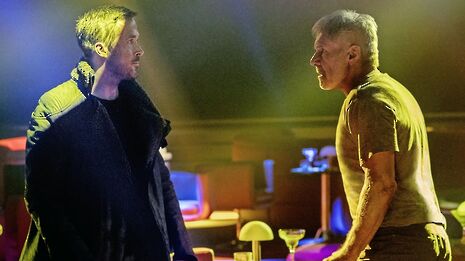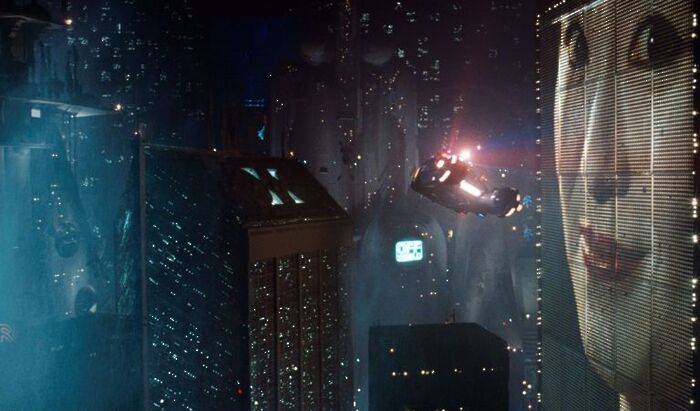Review: Shooting to stun in Blade Runner 2049
Awed to the extreme, Lillian Crawford tested out Cambridge’s new IMAX screen at the Light with one of her picks for the best films of recent times – a sequel truly deserving of the name

There has always been a reluctance to admit that a sequel supersedes its predecessor. The establishment of a cinematic legacy does not simply happen overnight, and the status of Blade Runner is not one to be questioned with ease. Yet it never obtained such heights through narrative – should one desire femme fatales and tears in rain one need only watch any classic film noir. Instead it was through superlative visual effects that Ridley Scott created a futuristic vision which blossomed into one of the greatest works of science-fiction ever made. To suggest that its sequel, then, with the benefit of 35 years of technological development, is not superior would be folly.
“The wide shots alone could be appreciated as an exhibition of an industry at the very peak of its powers”
We begin much the same as last time: definitions of AI, an extreme close-up of an eye, the quasi-Vangelis score swelling and throbbing beneath. And yet, far from the foreboding fireballs of San Francisco 2019, the screen fills with blinding light, the overwhelming clarity of California 2049. America has changed in thirty years, but there remains a startling familiarity. Scott’s foresight from 1982 parallels Denis Villeneuve’s perception from 2017 in its striking use of present-day technology, with keyboards still resembling Apple Macs and Coca Cola cans unchanged. Perhaps this is the only tarnish on an otherwise immaculate canvas, not the lack of alteration, but the shameless smattering of product placement throughout the near 3-hour runtime.
That having been asserted, Director of Photography Roger Deakins has nevertheless created the most sumptuous display ever projected, contrasting blinding neon with almost sensual burnt orange. Every frame has been crafted to sheer perfection – one need only sit through the credits to appreciate the enormity of the crew involved – and the result demands to be viewed in all its IMAX glory. Indeed, regardless of narrative, the wide shots alone could be appreciated as an exhibition of an industry at the very peak of its powers.
Villeneuve has proved himself the master of layering to create rich, all-consuming pieces of cinema, having collaborated with Deakins to great effect on other masterworks like Serpico. Last year’s Arrival coupled exquisite artistic design with Jóhann Jóhannsson’s stirring score, and here he has employed the talents of both Hans Zimmer and Benjamin Wallfisch to take up the seemingly untouchable gauntlet of Vangelis. Having moved away from his typically bombastic orchestrations with the pounding themes of Dunkirk, Zimmer seems to have found an ideal partnership in Wallfisch, infusing synth music to weave a vibrating blanket that carries, and engulfs, the film. While none of the original themes come close to the memorability of Vangelis’s soundtrack, they have proved worthy successors that inspire hope for future collaborations.

Of course, to argue that the original Blade Runner faltered in aspects beyond the visual would be false, and Rutger Hauer’s chilling performance as Roy Batty remains unrivalled. There had been concerns then that the unique approach to the dangers of AI would simply be repeated in 2049, much as The Force Awakens mirrored the plot of 1977’s Star Wars. Doubts are immediately quashed however – once again, the last 35 years have not been wasted with mere narrative regurgitation. There are parallels to the original, yet Ryan Gosling’s Agent K is no Rick Deckard, mostly in that here a more intimate portrayal of the titular replicant-killer is crafted. The story focuses deeper than before on K’s domestic life, especially in the depiction of his challenging onscreen relationship. This is ingeniously portrayed in a breathtaking love scene that uses CGI in ways Scott could only ever have dreamed of the first time round, albeit one that pushes one’s moral faculties.
Gosling is on top form and needs to be – onscreen for most of the film’s epic length, it is a testament to him that proceedings never for a moment seem to drag, far more Oscar-worthy than his turn in La La Land. Alas, he could not do it alone, and Villeneuve has employed the talents of a consistently impressive supporting cast. While Harrison Ford gives a brilliantly earnest portrayal of a man scarred by a life of unrelenting pain, he does not come into the picture until well into the second act, and the returning Edward James Olmos is reduced to a short scene that feels like little more than a fleeting cameo. It then falls upon the host of new actors to support our protagonist, amongst whom Ana de Armas stands out as K’s girlfriend, Joi. For want of avoiding spoilers, little more can be developed here, although there are sure to be plenty of analyses of the film’s ethical challenges and propositions to come.
It can be impossible to assert categorically upon a film’s release that it will one day be acknowledged amongst the greatest works of cinema. But have no fear – this is a loyal follow-up that plays to Blade Runner’s strengths and cranks them into overdrive. Far from being superfluous, Villeneuve has continued the story in a way that is necessary and right, tying up some loose ends but leaving new ones that will continue to fuel cult debate for years. One can hardly imagine a film worthier of sequel status, possibly the finest work of its kind, that is sure to never be lost in time. Prepare to see things you people wouldn’t believe
 News / Uni Scout and Guide Club affirms trans inclusion 12 December 2025
News / Uni Scout and Guide Club affirms trans inclusion 12 December 2025 News / Cambridge Vet School gets lifeline year to stay accredited28 November 2025
News / Cambridge Vet School gets lifeline year to stay accredited28 November 2025 Science / Did your ex trip on King’s Parade? The science behind the ‘ick’12 December 2025
Science / Did your ex trip on King’s Parade? The science behind the ‘ick’12 December 2025 News / Cambridge study finds students learn better with notes than AI13 December 2025
News / Cambridge study finds students learn better with notes than AI13 December 2025 News / Pembroke to convert listed office building into accom9 December 2025
News / Pembroke to convert listed office building into accom9 December 2025








